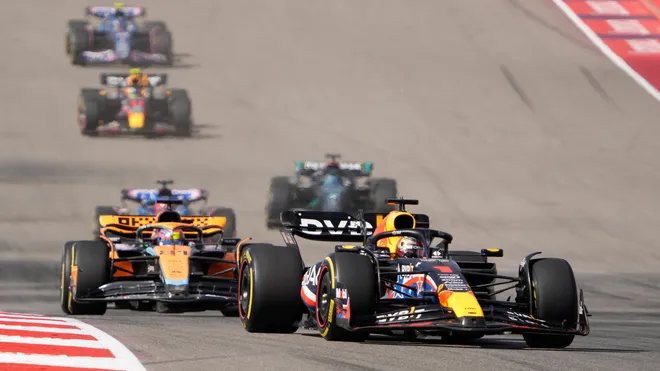Formula 1, the pinnacle of motorsport, is as much a test of endurance as it is of speed. Fans around the world tune in not just for the thrill of high-speed racing but also for the strategy, precision, and the fascinating variables that each circuit brings to the table. One of the most intriguing aspects of F1 racing is the variation in the number of laps per race, determined by the length and characteristics of each circuit. But how many laps does it take to complete an F1 race, and what are the specifics of this season’s circuits? Let’s dive in.
How Many Laps Are in an F1 Race?
The number of laps in a Formula 1 race isn’t a fixed number across all circuits. Instead, it varies depending on the length of the track. The FIA, the governing body of Formula 1, mandates that every race should cover a minimum distance of 305 kilometers (189.5 miles), except for the Monaco Grand Prix, which is an iconic shorter race.
Given that each track is of different lengths, the number of laps required to reach this distance also varies. For example, on a shorter circuit like Monaco, the race consists of 78 laps, while on a longer circuit like Spa-Francorchamps in Belgium, there are only 44 laps. The variation in lap counts adds another layer of complexity to race strategies, as teams and drivers must adapt to the unique demands of each circuit.
The Structure of an F1 Race: Laps and Distance
The structure of an F1 race is designed to challenge the drivers’ stamina and the teams’ strategy-making abilities. Here’s how it works:
- Race Distance: Every Grand Prix, barring the exceptions like Monaco, must meet the 305-kilometer requirement. This rule ensures that each race has a similar level of endurance, regardless of the track length.
- Lap Length: Tracks vary in length from the shorter Monaco circuit (3.337 km) to the longer Spa-Francorchamps (7.004 km). The number of laps is calculated to ensure that the total race distance falls as close as possible to the 305-kilometer mark.
- Exceptions: The Monaco Grand Prix is the only circuit where the race is shorter than 305 kilometers. This exception is due to the tight and narrow streets of Monaco, making it a challenging circuit that requires a high number of laps (78) to meet the distance requirements.
This Season’s Circuits, Lengths, and Lap Totals
This season brings a mix of classic and modern circuits, each with its unique challenges. Here’s a breakdown of some key races:
- Bahrain Grand Prix: The Bahrain International Circuit features a lap length of 5.412 km. The race is completed in 57 laps, covering a total distance of 308.238 km.
- Monaco Grand Prix: As mentioned earlier, the Monaco circuit is the shortest on the calendar at 3.337 km per lap, resulting in 78 laps to reach a total distance of 260.286 km.
- British Grand Prix: Silverstone Circuit in the UK is 5.891 km long, and drivers must complete 52 laps, resulting in a race distance of 306.198 km.
- Belgian Grand Prix: Spa-Francorchamps, the longest circuit at 7.004 km, requires only 44 laps to meet the 308.052 km race distance.
- Italian Grand Prix: Monza, known as the “Temple of Speed,” is 5.793 km long, with a total of 53 laps, covering 306.72 km.
Strategic Implications of Lap Totals
The number of laps in an F1 race isn’t just a statistic; it has significant strategic implications. Fewer laps mean longer stints between pit stops, which can influence tire strategies and fuel management. Conversely, more laps on shorter circuits often require more frequent pit stops, placing a premium on quick tire changes and flawless execution by the pit crew.
Teams also have to account for the weather, track conditions, and the likelihood of safety car interventions, all of which can dramatically affect the race outcome. For instance, a wet race at Monaco can turn the streets into a slippery maze, requiring drivers to adapt their strategies on the fly.
Understanding F1 Laps and Circuit Nuances
The variability in lap totals across different circuits adds to the complexity and excitement of Formula 1. From the 78 laps around Monaco’s tight corners to the 44 laps at Spa’s sweeping bends, each race presents unique challenges that test both driver skill and team strategy. Understanding the nuances of each circuit, including lap lengths and total distance, offers fans a deeper appreciation of the sport.
Whether you’re a seasoned fan or new to F1, knowing how many laps make up a race and what that means for the drivers and teams adds an extra layer of enjoyment to watching these incredible athletes compete.
For more insightful content and the latest updates in the world of motorsport, make sure to check out our other News articles on Digital Digest.





